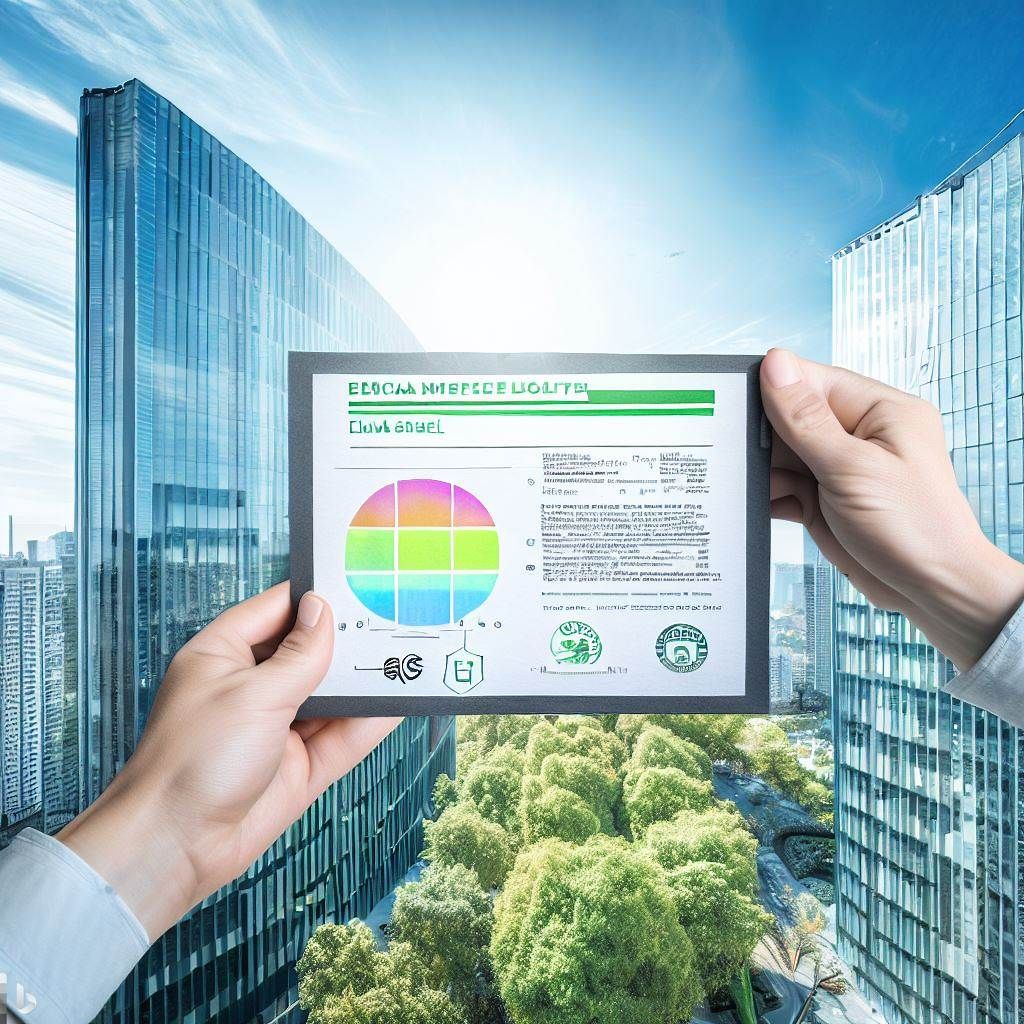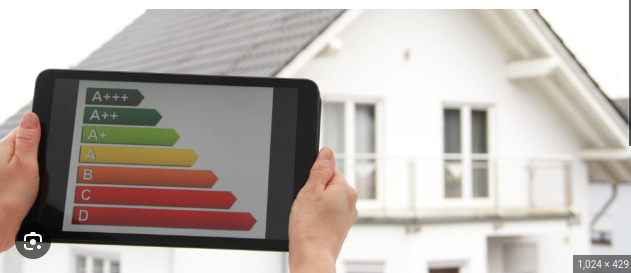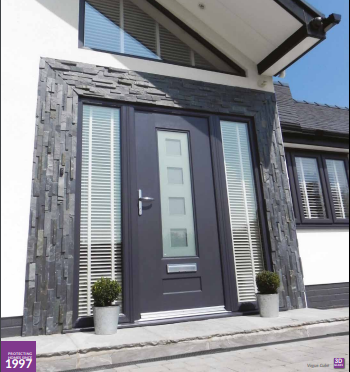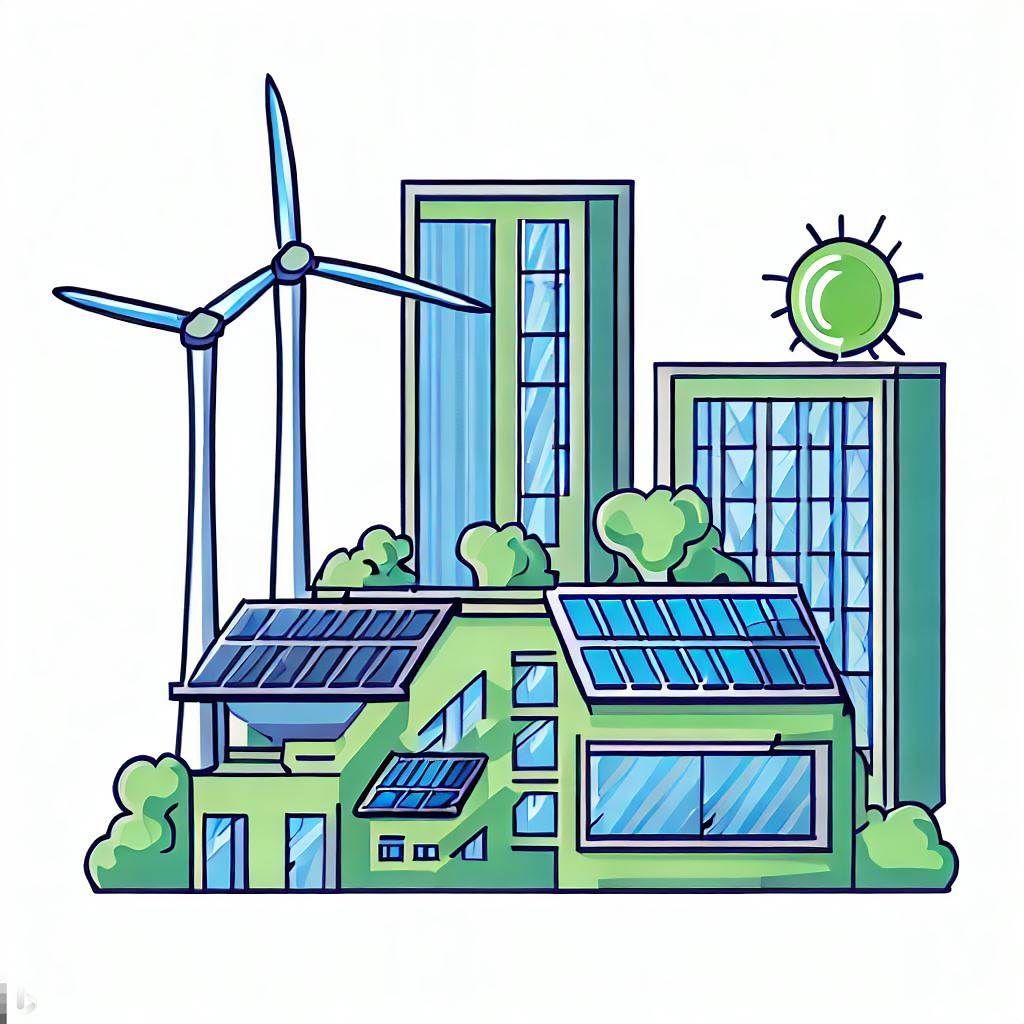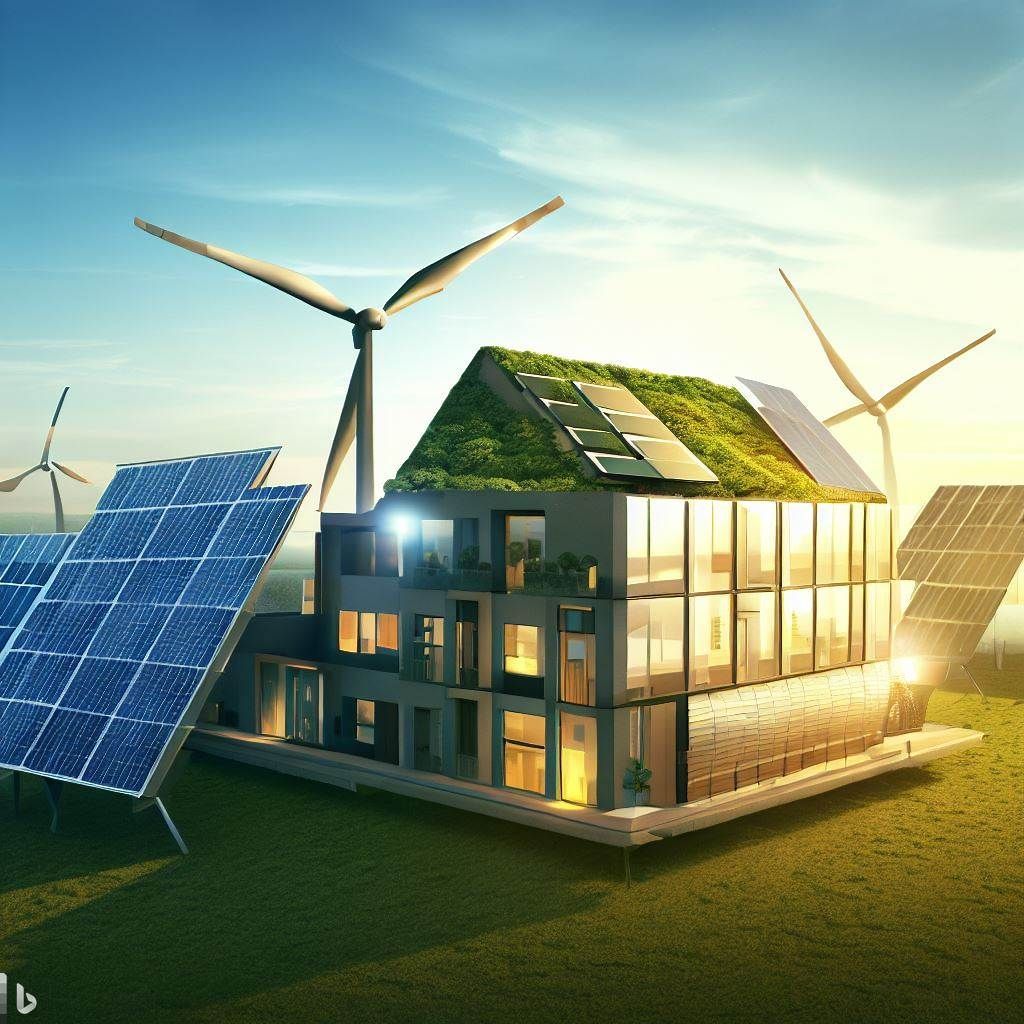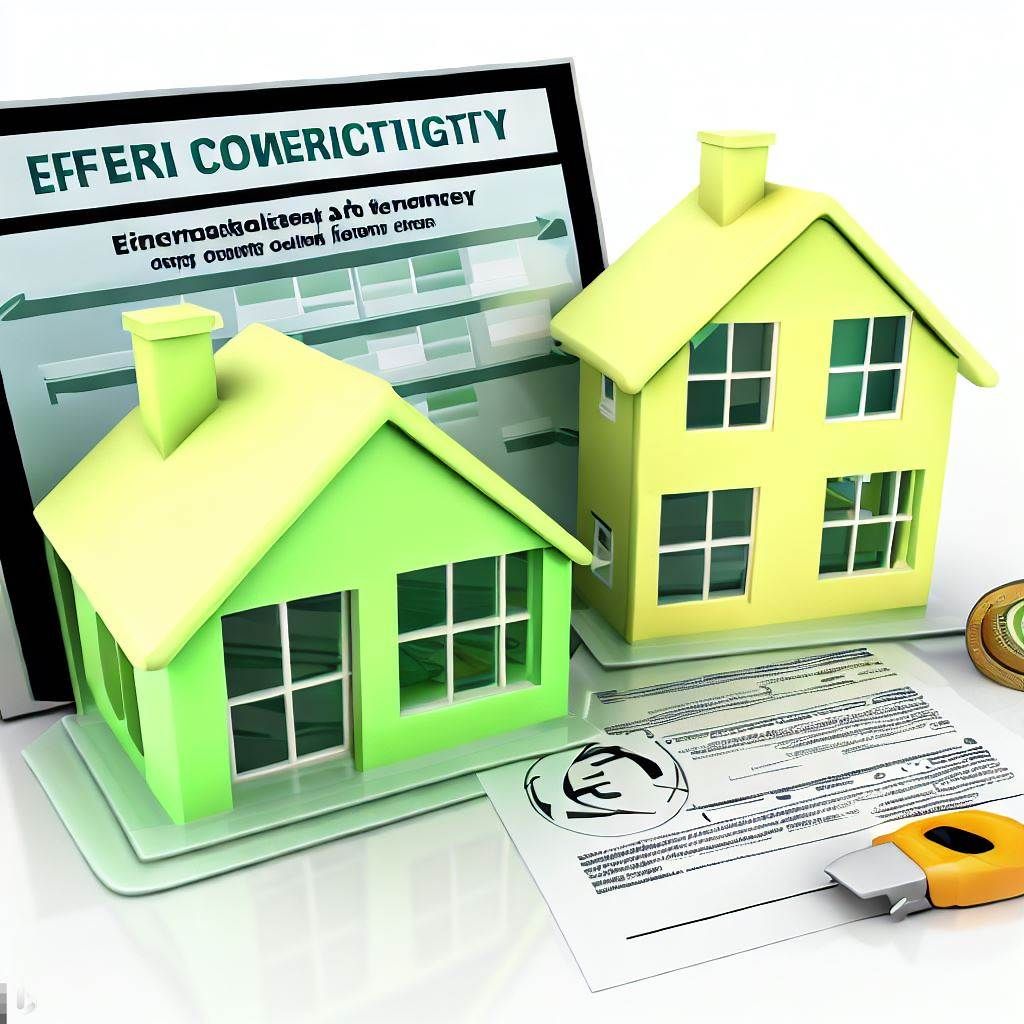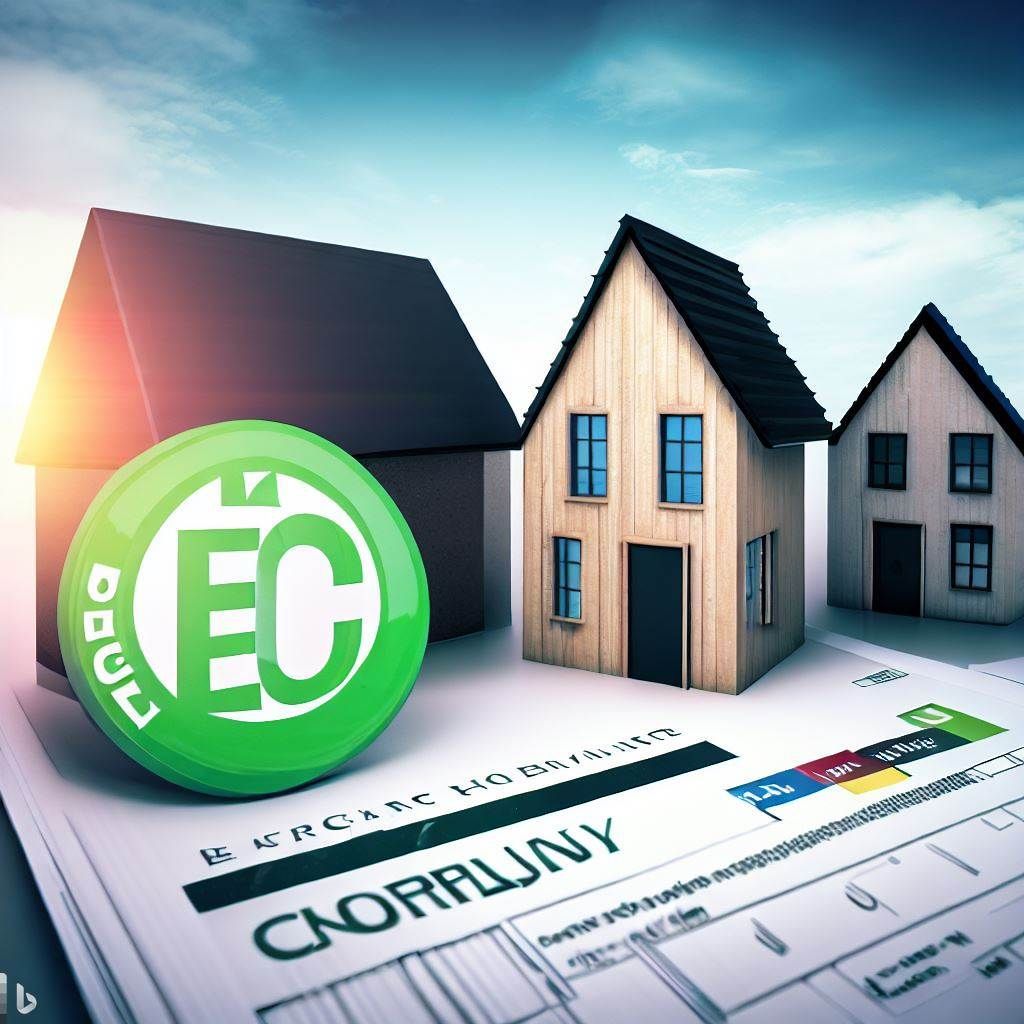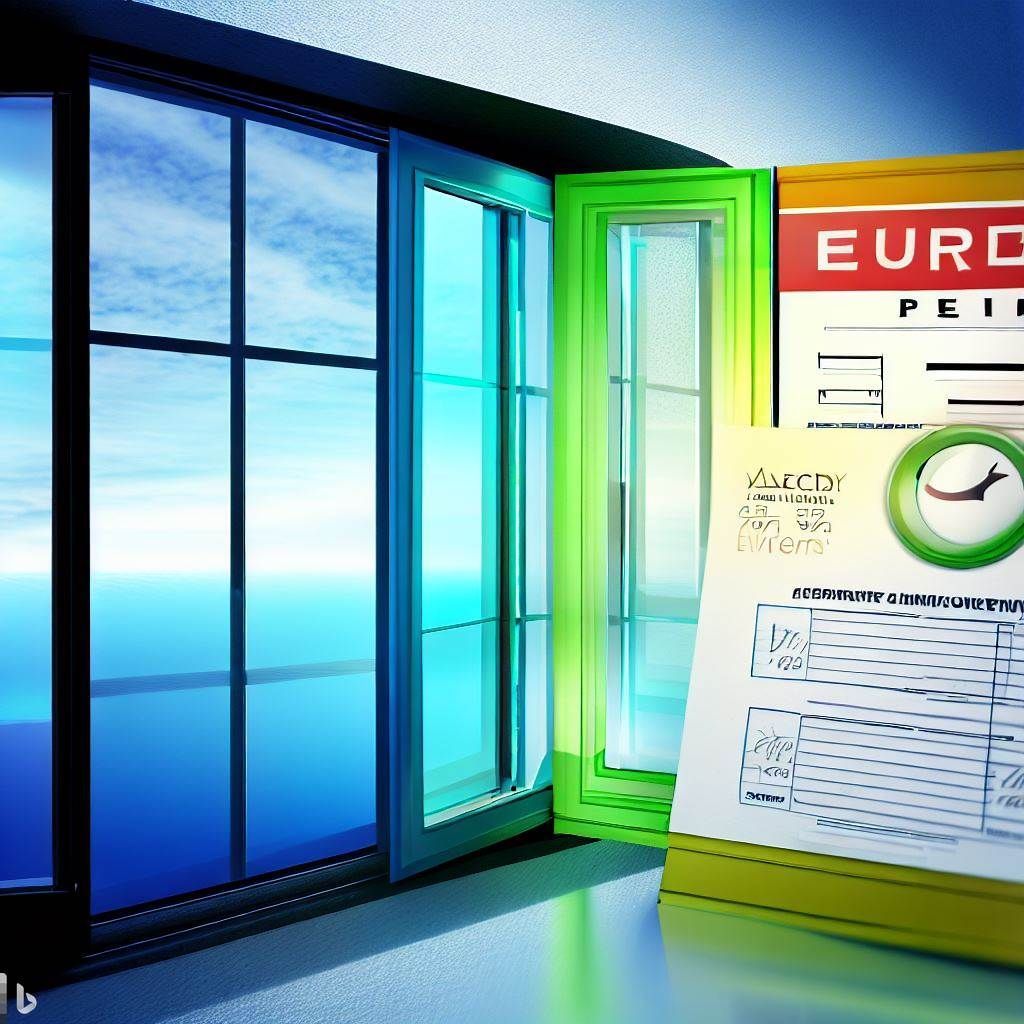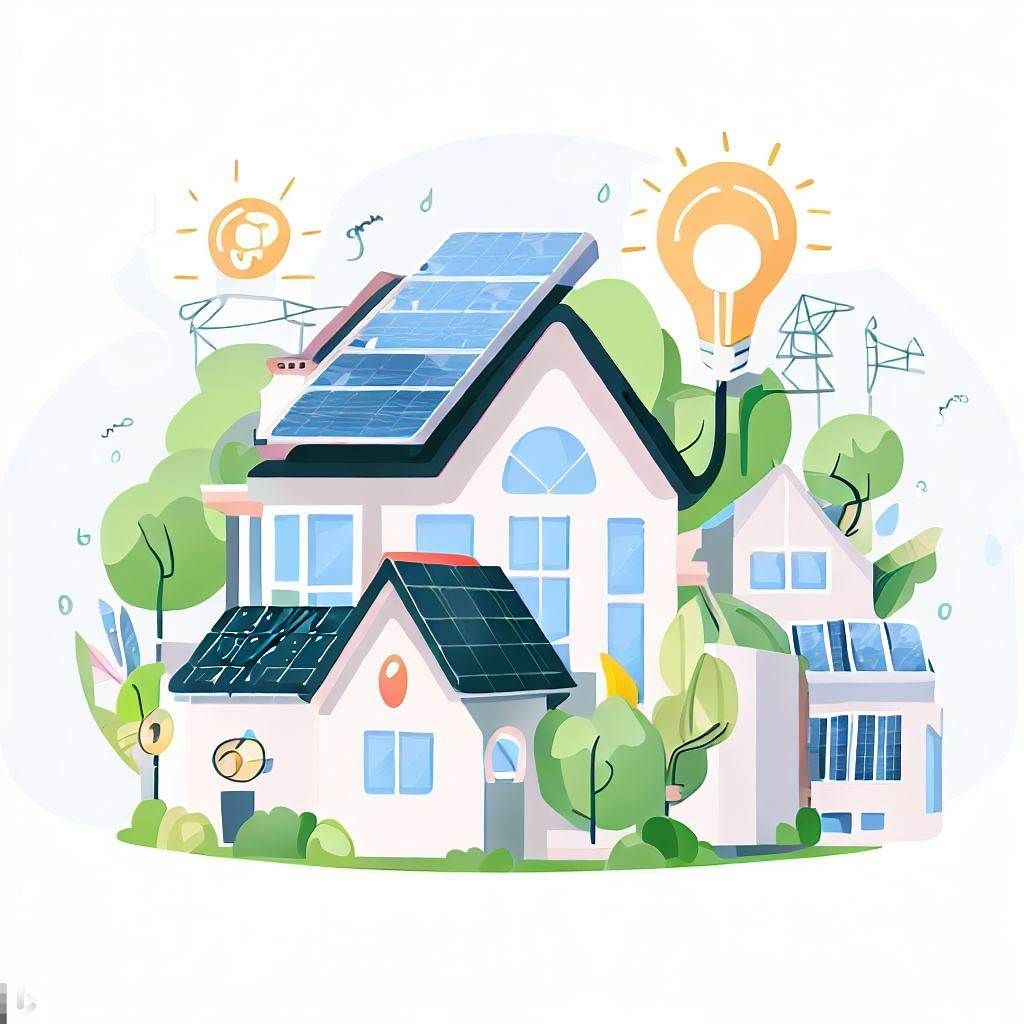EPC Rated A: How Energy Efficiency Enhances Home Comfort
My Guide To Energy Efficient Homes and an EPC Rated A.
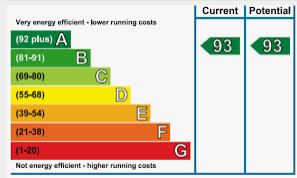
Introduction
In today's world, where environmental concerns and energy conservation are paramount, the demand for energy-efficient homes is on the rise. One significant factor in assessing a property's energy efficiency is its Energy Performance Certificate (EPC) rating. EPC Rated A homes stand out as the epitome of energy efficiency, offering numerous benefits to homeowners. In this blog post, we will delve into the ways in which energy efficiency enhances home comfort and why opting for an EPC Rated A property can make a real difference.
1. Understanding the EPC Rating System
Before we explore the correlation between energy efficiency and home comfort, it's crucial to understand the EPC rating system. EPC ratings range from A to G, with A being the most energy-efficient. We'll provide an overview of the rating categories and highlight why EPC Rated A homes are considered the gold standard in terms of energy performance.
2. Improved Indoor Climate Control
Energy efficiency goes hand in hand with effective indoor climate control. EPC Rated A homes typically feature advanced insulation, airtight construction, and high-quality windows. These features help to regulate the temperature inside the house, minimizing heat loss in winter and heat gain in summer. We'll discuss the impact of a comfortable indoor environment on overall home comfort and the reduced reliance on heating and cooling systems.
3. Enhanced Air Quality
Another key aspect of home comfort is air quality. Energy-efficient homes often incorporate features such as mechanical ventilation systems, air filters, and low-toxicity materials, all contributing to improved indoor air quality. We'll explain how these features reduce allergens, pollutants, and moisture, resulting in a healthier and more comfortable living environment.
4. Noise Reduction
A lesser-known benefit of energy-efficient homes is their ability to reduce noise pollution. The high-quality insulation and advanced windows found in EPC Rated A properties act as effective sound barriers, blocking external noise and creating a serene living space. We'll explore how noise reduction contributes to home comfort and better sleep quality.
5. Cost Savings and Energy Efficiency
Energy-efficient homes, with their EPC Rated A status, offer significant cost savings in the long run. We'll explain how these properties consume less energy, resulting in lower utility bills and reduced environmental impact. Additionally, we'll discuss potential financial incentives, such as government grants and tax benefits, that homeowners can avail themselves of when investing in energy-efficient upgrades.
Conclusion
In conclusion, choosing an EPC Rated A property not only demonstrates a commitment to sustainability but also brings tangible benefits in terms of enhanced home comfort. From improved indoor climate control and air quality to noise reduction and cost savings, energy-efficient homes offer a superior living experience. By prioritising energy efficiency, homeowners can create a comfortable and environmentally friendly sanctuary for themselves and their families. Invest in an EPC Rated A property today and enjoy the benefits for years to come.
1.1 Understanding the EPC Rating System
Energy Performance Certificates (EPCs) play a crucial role in assessing the energy efficiency of a property. The EPC rating system provides a standardized way to measure and compare the energy performance of different homes. To make informed decisions about energy efficiency, it's important to understand how the EPC rating system works.
The EPC rating system uses a scale from A to G, with A being the most energy-efficient and G being the least efficient. Each rating represents a different level of energy consumption and carbon emissions. Let's take a closer look at each rating category:
- EPC Rated A: Properties with an EPC rating of A are considered highly energy-efficient. These homes have excellent insulation, efficient heating systems, and often incorporate renewable energy sources. They have lower energy consumption and carbon emissions compared to lower-rated properties.
- EPC Rated B to C: Homes in this category are also considered energy-efficient. They have good insulation, efficient heating and cooling systems, and take steps to reduce energy consumption. While not as efficient as EPC Rated A properties, they still offer significant energy savings.
- EPC Rated D: Properties with a D rating have average energy performance. They may have some energy-efficient features but often have room for improvement. These homes tend to have higher energy consumption and carbon emissions compared to higher-rated properties.
- EPC Rated E to F: Homes in this category have below-average energy efficiency. They may have poor insulation, outdated heating systems, or inefficient appliances. Energy consumption and carbon emissions are higher, leading to increased energy costs.
- EPC Rated G: This is the least energy-efficient rating. Properties with a G rating have significant energy wastage and high carbon emissions. They may lack proper insulation, have outdated heating systems, and consume excessive amounts of energy.
It's important to note that EPC ratings are specific to each building and take into account various factors such as building fabric, heating systems, lighting, and renewable energy sources. An accredited energy assessor conducts an assessment to determine the property's energy performance.
The EPC rating provides potential buyers or tenants with valuable information about a property's energy efficiency and associated costs. Higher-rated properties, such as those with an EPC rating of A, are generally more desirable due to their lower energy bills and reduced environmental impact.
In conclusion, understanding the EPC rating system is essential for evaluating a property's energy efficiency. By considering the EPC rating, potential buyers and tenants can make informed decisions and choose homes that align with their sustainability goals. Investing in an energy-efficient property not only benefits the environment but also contributes to lower energy costs and improved comfort.
2.1 Improved Indoor Climate Control
One of the significant advantages of energy-efficient homes with an EPC Rated A is the superior indoor climate control they provide. These homes are designed with features that help regulate the temperature and create a comfortable living environment throughout the year. Let's explore how energy efficiency enhances indoor climate control and its impact on home comfort.
- Advanced Insulation: EPC Rated A homes are built with high-quality insulation materials. Proper insulation plays a crucial role in minimising heat transfer through walls, floors, and roofs. It helps to maintain a consistent temperature inside the house, keeping it warm in winter and cool in summer. By preventing heat loss or gain, energy-efficient insulation reduces the need for excessive heating or cooling, leading to lower energy consumption and cost savings.
- Airtight Construction: EPC Rated A properties often feature airtight construction methods. This means that there are fewer air leaks and drafts, allowing for better control over the indoor environment. Airtightness ensures that the conditioned air stays inside the home, preventing heat loss during the colder months and keeping the cool air in during summer. It also helps to maintain a consistent humidity level, reducing the risk of moisture-related issues such as mould growth.
- High-Quality Windows: Energy-efficient homes typically have double or triple glazed windows with low-emissivity (low-e) coatings. These windows provide excellent thermal insulation and minimise heat transfer between the interior and exterior. They also help to reduce drafts and noise pollution, creating a more serene and comfortable living environment. The high-quality windows found in EPC Rated A properties contribute to maintaining a consistent indoor temperature and reducing energy usage for heating and cooling.
- Efficient Heating and Cooling Systems: Energy-efficient homes often incorporate advanced heating and cooling systems. These systems are designed to provide precise control over indoor temperature, ensuring optimal comfort while minimising energy consumption. EPC Rated A properties may feature high-efficiency boilers, heat pumps, or even geothermal systems that utilise renewable energy sources. These systems are not only energy-efficient but also contribute to a more comfortable and evenly heated/cooled home.
- Smart Thermostat Integration: Many energy-efficient homes come equipped with smart thermostats. These thermostats allow homeowners to easily control the temperature settings and schedule heating or cooling based on their preferences and occupancy patterns. Smart thermostats can learn from usage patterns and adjust temperature settings accordingly, optimising comfort and energy savings. They provide homeowners with greater control and flexibility over their indoor climate.
By combining advanced insulation, airtight construction, high-quality windows, efficient heating and cooling systems, and smart thermostat integration, EPC Rated A homes achieve superior indoor climate control. These features work together to create a comfortable living environment with consistent temperatures, reduced drafts, and optimal humidity levels. Homeowners can enjoy the benefits of a cozy home throughout the year while minimising energy consumption and lowering utility costs.
In conclusion, energy-efficient homes with an EPC Rated A rating excel in providing improved indoor climate control. The incorporation of advanced insulation, airtight construction, high-quality windows, efficient HVAC systems, and smart thermostat integration ensures optimal comfort, energy savings, and a more pleasant living experience. Investing in an EPC Rated A property not only contributes to a greener future but also enhances the comfort and well-being of the occupants.
3.1 Enhanced Air Quality
In addition to energy efficiency and improved indoor climate control, energy-efficient homes with an EPC Rated A rating also offer enhanced air quality. These homes are designed with features that promote better ventilation, filtration, and a reduction in indoor pollutants. Let's explore how energy efficiency contributes to enhanced air quality and its impact on overall home comfort.
- Mechanical Ventilation Systems: EPC Rated A homes often incorporate mechanical ventilation systems, such as heat recovery ventilation (HRV) or mechanical ventilation with heat recovery (MVHR) systems. These systems continuously supply fresh air while extracting stale air from the property. By providing a controlled flow of fresh air, mechanical ventilation systems improve indoor air quality by reducing the buildup of pollutants, odours, and excess moisture. They also help to minimise the risk of condensation and mould growth.
- Air Filters: Energy-efficient homes typically feature high-quality air filters within their heating, ventilation, and air conditioning (HVAC) systems. These filters are designed to capture dust, pollen, allergens, and other airborne particles, preventing them from circulating throughout the house. By removing these pollutants, energy-efficient homes promote cleaner and healthier indoor air, reducing the risk of respiratory issues and allergies.
- Low-Toxicity Materials: Energy-efficient homes often prioritise the use of low-toxicity or eco-friendly building materials. This includes paints, adhesives, and flooring materials that emit fewer volatile organic compounds (VOCs) and other harmful chemicals. By minimising the release of pollutants into the indoor air, these materials contribute to a healthier living environment.
- Controlled Indoor Humidity: Energy-efficient homes with superior insulation and airtight construction help to control indoor humidity levels. Proper moisture management is essential for preventing mould growth and maintaining good indoor air quality. By minimising moisture buildup and condensation, energy-efficient homes reduce the risk of mould, mildew, and associated respiratory problems.
- Natural Ventilation Opportunities: Energy-efficient homes often incorporate design elements that promote natural ventilation, such as strategically placed windows, skylights, or ventilation openings. This allows for the exchange of indoor and outdoor air, improving air circulation and reducing the buildup of pollutants. Natural ventilation can be particularly beneficial in eliminating odours and refreshing the indoor environment.
By incorporating mechanical ventilation systems, high-quality air filters, low-toxicity materials, controlled indoor humidity, and natural ventilation opportunities, EPC Rated A homes achieve enhanced air quality. These features work together to ensure a healthier living environment with reduced allergens, pollutants, and moisture-related issues.
Improved air quality not only contributes to better respiratory health but also enhances overall home comfort. Clean and fresh indoor air promotes a sense of well-being, reduces the likelihood of allergies or respiratory discomfort, and provides a more pleasant living experience.
In conclusion, energy-efficient homes with an EPC Rated A rating prioritise enhanced air quality by incorporating mechanical ventilation systems, air filters, low-toxicity materials, controlled humidity levels, and natural ventilation opportunities. These features create a healthier and more comfortable indoor environment, free from allergens, pollutants, and excess moisture. Investing in an EPC Rated A property ensures that occupants can enjoy clean and fresh air while maintaining a sustainable and energy-efficient home.
4.1 Noise Reduction
Energy-efficient homes with an EPC Rated A rating offer an often overlooked benefit: noise reduction. These homes are designed with features that help minimise external noise, creating a quieter and more peaceful living environment. Let's explore how energy efficiency contributes to noise reduction and its impact on home comfort.
- High-Quality Insulation: EPC Rated A homes typically feature advanced insulation materials that not only improve energy efficiency but also provide effective noise insulation. Properly insulated walls, floors, and roofs help to block out external sounds, reducing the transmission of noise from the outside. This is particularly beneficial for homes located in busy urban areas or near highways or airports.
- Sound-Reducing Windows: Energy-efficient homes often incorporate high-quality windows with sound-reducing properties. These windows are designed to minimise noise infiltration and create a barrier against outside sounds. Double or triple glazing, combined with specialised acoustic glass, helps to dampen the impact of external noises such as traffic, construction, or loud neighbours.
- Airtight Construction: The airtight construction methods used in energy-efficient homes contribute to noise reduction as well. By minimising air leaks and drafts, these homes help to prevent the penetration of outdoor noise. Airtightness ensures that the internal environment remains tranquil, allowing occupants to enjoy a peaceful atmosphere within their homes.
- Interior Soundproofing: Energy-efficient homes often incorporate interior soundproofing measures as well. This can include the use of sound-absorbing materials in walls, ceilings, and floors, as well as the installation of acoustic panels or curtains. These measures help to reduce sound reverberation within the home and create a quieter indoor environment.
By combining high-quality insulation, sound-reducing windows, airtight construction, and interior soundproofing measures, EPC Rated A homes achieve effective noise reduction. These features work together to create a more serene and peaceful living environment, shielding occupants from unwanted external noises.
Reducing noise pollution within the home offers several benefits for home comfort. A quieter environment promotes better sleep quality, relaxation, and overall well-being. It allows occupants to enjoy a more tranquil and comfortable living space, free from disruptive external sounds.
In conclusion, energy-efficient homes with an EPC Rated A rating not only excel in energy efficiency but also provide noise reduction benefits. Through features such as high-quality insulation, sound-reducing windows, airtight construction, and interior soundproofing measures, these homes create a peaceful oasis away from the noise of the outside world. Investing in an EPC Rated A property ensures a quieter and more comfortable living environment for the enjoyment and well-being of occupants.
5.1 Cost Savings and Energy Efficiency
Energy-efficient homes with an EPC Rated A rating offer significant cost savings in addition to their environmental benefits. These homes are designed to minimise energy consumption, resulting in lower utility bills and reduced environmental impact. Let's explore how energy efficiency contributes to cost savings and its impact on home affordability.
- Reduced Energy Consumption: EPC Rated A homes are designed with energy-saving features such as advanced insulation, efficient heating and cooling systems, and energy-efficient appliances. These features help to minimise the amount of energy required to heat, cool, and power the home. As a result, energy-efficient homes consume less energy compared to lower-rated properties, translating into reduced energy bills for homeowners.
- Lower Utility Bills: By reducing energy consumption, energy-efficient homes with an EPC Rated A rating can significantly lower utility bills. The reduced reliance on heating, cooling, and lighting systems, as well as efficient use of appliances, leads to substantial savings over time. Homeowners can enjoy lower monthly expenses, freeing up resources for other needs or investments.
- Financial Incentives: Investing in energy-efficient upgrades or purchasing an EPC Rated A property may qualify homeowners for various financial incentives. These incentives can include government grants, rebates, tax credits, or loans with favourable terms. Such programs aim to encourage energy-efficient practices and help offset the upfront costs associated with energy-efficient home improvements. Taking advantage of these incentives can further enhance the cost savings and make energy-efficient homes more financially viable.
- Long-Term Value: Energy-efficient homes with an EPC Rated A rating tend to retain their value better over time. As energy costs continue to rise, homes with lower energy consumption become more attractive to buyers. The energy efficiency and associated cost savings can increase the resale value of the property, making it a wise long-term investment.
- Environmental Benefits: Energy-efficient homes contribute to reducing carbon emissions and mitigating climate change. By choosing an EPC Rated A property, homeowners actively participate in environmental stewardship. The reduced environmental impact helps create a sustainable future for generations to come.
In conclusion, energy-efficient homes with an EPC Rated A rating offer significant cost savings and improved affordability. Through reduced energy consumption, lower utility bills, potential financial incentives, increased long-term value, and environmental benefits, homeowners can experience substantial savings while enjoying a comfortable living environment. Investing in an energy-efficient home not only benefits individuals financially but also contributes to a greener and more sustainable world.
By choosing an EPC Rated A property, homeowners can make a positive impact on their finances and the environment. It's a win-win situation that allows for long-term cost savings, increased home affordability, and a more sustainable lifestyle.
